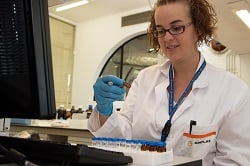Packaging migration testing: developments in food contact plastics legislation

Since the publication of the Regulation 10/2011 on plastic materials and articles intended to come into contact with food, there have been different transitional provisions allowing the packaging industry to adapt progressively to this new regulation.

These provisions referenced mainly to the testing conditions applied, the legislation to be included in the declarations of compliance of the articles and how to proceed with those articles already placed on the market at the Regulation’s date of issue.
Last 31 December 2015, it concluded the last transitional period foreseen, so from 1 January 2016 all the requirements established by the Regulation 10/2011 are applicable. Thus, a Declaration of Compliance in agreement with the Regulation 10/2011 will be only issued if the supporting documentation is based on tests made according to screening approaches or verification methods (overall and specific migration tests and/or residual content tests) of the Regulation 10/2011.
Therefore, since this date, all the plastic materials and articles intended to come into contact with food that require migration tests shall be tested by using the exposure conditions included in the Regulation 10/2011.
Regulation (EU) 2016/1416 amending Regulation 10/2011 (known as sixth amendment) was published last August. This amendment includes some modifications regarding the List of authorised substances (new substances included and modified restrictions or specifications for some already authorised substances). Moreover it includes some changes and clarifications regarding migration testing, in particular regarding food simulants (e.g. new food simulants assignment for Fruits and Vegetables, clarifications regarding the use of Ethanol 95% and Isooctane substituting food simulant D2, etc.) and testing conditions (e.g. definition of ‘hot-fill’ conditions, widening of the heating up conditions covered by some standard test conditions, new specific migration test temperatures for high temperature applications, etc.).
The publication of the “Technical Guidelines for Compliance Testing” which initially was expected to be published parallel to the sixth amendment is still pending.
In AIMPLAS, we recall the importance of having accredited laboratories and experts’ assessment in order to comply with the current regulations.